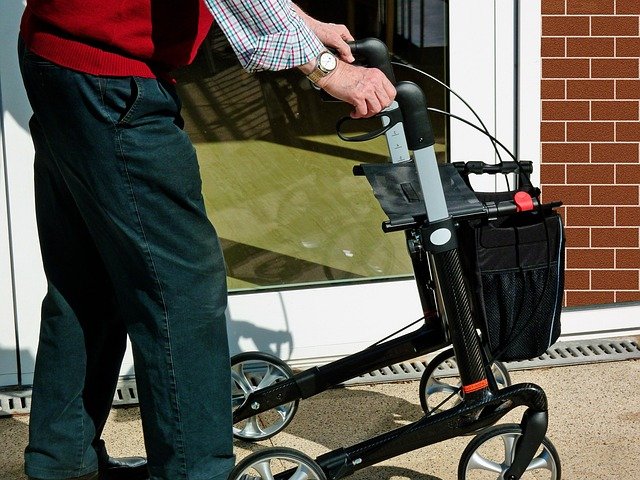Explore helpful tips on fall prevention options for seniors
Falls represent a significant health risk for older adults, potentially leading to serious injuries and reduced independence. Understanding effective fall prevention strategies is crucial for maintaining senior safety and quality of life. From home modifications to assistive devices and daily habits, a comprehensive approach to fall prevention can dramatically reduce risks while supporting continued mobility and confidence.

Falls among seniors represent a serious health concern that can lead to injuries, hospitalization, and decreased independence. According to the Centers for Disease Control and Prevention, one in four Americans aged 65+ falls each year, making fall prevention a critical aspect of senior care. Creating safer environments and utilizing appropriate support tools can significantly reduce these risks while allowing older adults to maintain their independence and quality of life.
Essential Home Modifications for Fall Prevention
Creating a safer living environment is fundamental to preventing falls. Simple modifications can make a significant difference in home safety. Remove tripping hazards like loose rugs, electrical cords, and clutter from walkways. Improve lighting throughout the home, especially in hallways, stairwells, and bathrooms. Install grab bars in bathrooms near toilets and showers, and secure handrails on both sides of staircases. Consider replacing doorknobs with lever handles for easier operation and installing non-slip mats in bathtubs and showers. For more substantial modifications, ramps at entrances, stairlifts, and first-floor bedroom conversions can address mobility challenges while significantly reducing fall risks.
Benefits of Assistive Devices for Senior Mobility
Assistive devices play a crucial role in fall prevention by providing stability and support during daily activities. Walkers offer excellent stability with their four-point base and are ideal for seniors with balance issues or weakness. Canes provide lighter support for those who need minimal assistance and come in various styles including standard, quad-base, and folding options. Rollators (wheeled walkers with seats) offer mobility with the option to rest when needed. When selecting an assistive device, proper fit is essential—the height should allow slight elbow bending when standing upright. Physical therapists can recommend the most appropriate device based on individual needs and provide training for safe, effective use.
Daily Safety Habits That Reduce Fall Risks
Incorporating safety-conscious habits into daily routines significantly reduces fall risks. Encourage seniors to take their time when changing positions, especially when rising from sitting or lying down. Wearing properly fitting, non-skid, low-heeled shoes provides better stability than slippers, socks, or going barefoot. Regular vision and hearing checkups are essential, as sensory impairments can increase fall risks. Medication management is equally important—some prescriptions may cause dizziness or affect balance, so regular medication reviews with healthcare providers can identify potential issues. Staying hydrated and maintaining proper nutrition also supports overall stability and strength.
Practical Tips for Improving Balance and Stability
Regular physical activity focused on balance and strength training helps prevent falls by improving coordination and muscle tone. Simple exercises like heel-to-toe walking, single-leg stands (while holding onto a sturdy surface), and gentle tai chi movements can significantly improve balance. Strength training with light weights or resistance bands helps maintain muscle mass and bone density. Chair exercises provide a safe option for those with limited mobility. Always consult healthcare providers before starting new exercise routines, and consider working with physical therapists who can design personalized programs addressing specific needs and abilities.
Empowering Seniors to Move Confidently
Building confidence in mobility is crucial for senior independence and quality of life. Fear of falling often leads to activity restriction, creating a cycle that actually increases fall risks through deconditioning. Encourage gradual activity increases in safe environments to rebuild confidence. Support groups connect seniors with peers facing similar challenges, providing emotional support and practical advice. Personal emergency response systems offer reassurance that help is available if needed. Regular practice with assistive devices in various environments builds proficiency and confidence. Celebrating mobility milestones, no matter how small, reinforces progress and motivates continued engagement.
Comparing Mobility Aids for Senior Safety
When selecting mobility aids, considering individual needs, lifestyle, and physical condition is essential for finding the most appropriate option.
| Mobility Aid Type | Best For | Key Features | Average Cost Range |
|---|---|---|---|
| Standard Walker | Limited mobility, need for maximum stability | Lightweight aluminum frame, no wheels, must be lifted to move | $30-$100 |
| Front-Wheeled Walker | Moderate mobility issues, indoor use | Two front wheels, back legs glide, easier to maneuver | $50-$150 |
| Rollator | Active seniors, outdoor use | Four wheels, built-in seat, hand brakes, storage basket | $70-$250 |
| Quad Cane | Mild balance issues | Four-point base for added stability | $30-$60 |
| Standard Cane | Minimal assistance needs | Single point contact, various handle styles | $15-$40 |
| Knee Walker | Recovery from foot/ankle injuries | Four wheels, padded knee platform, steering column | $100-$300 |
Prices, rates, or cost estimates mentioned in this article are based on the latest available information but may change over time. Independent research is advised before making financial decisions.
Selecting the right mobility aid often requires professional guidance. Physical therapists can assess gait, strength, and balance to recommend appropriate options. Many medical supply stores offer trial periods, allowing seniors to test devices before purchasing. Insurance coverage varies widely for mobility aids—Medicare typically covers walkers and canes when prescribed by a physician as medically necessary, while more specialized equipment may require out-of-pocket payment or supplemental insurance.
Fall prevention requires a multi-faceted approach combining environmental modifications, proper assistive devices, regular physical activity, and daily safety habits. By implementing these strategies, seniors can significantly reduce their fall risk while maintaining independence and confidence in their daily activities. The right combination of preventive measures, tailored to individual needs and circumstances, empowers older adults to navigate their environments safely while enjoying an active, fulfilling lifestyle.
This article is for informational purposes only and should not be considered medical advice. Please consult a qualified healthcare professional for personalized guidance and treatment.


